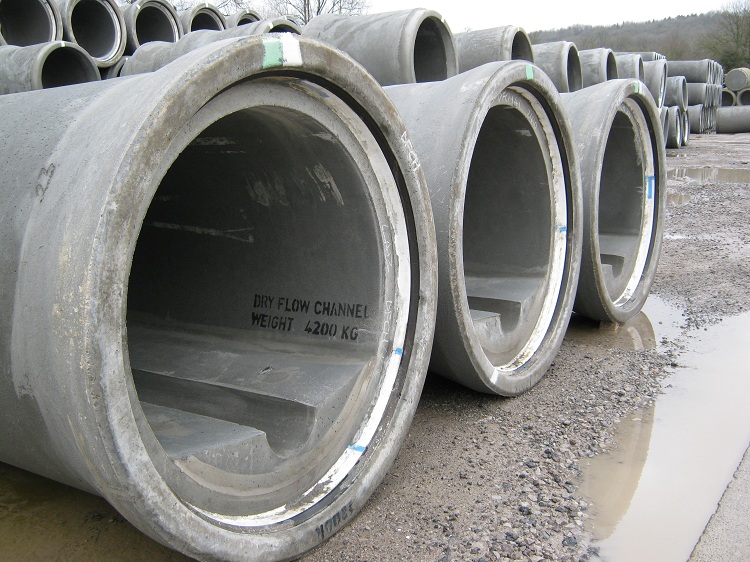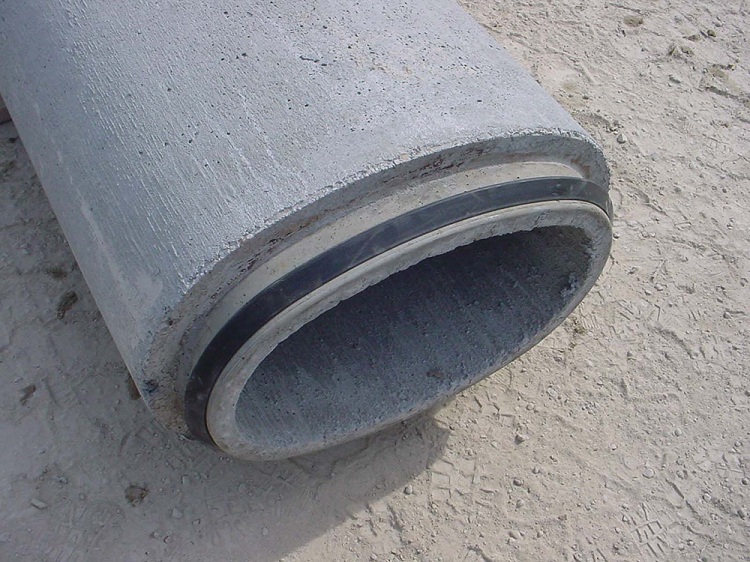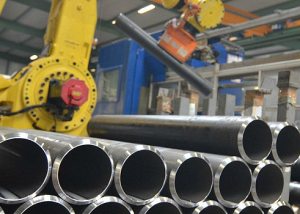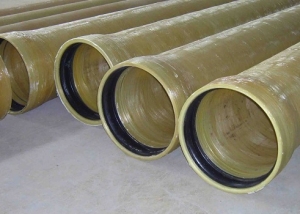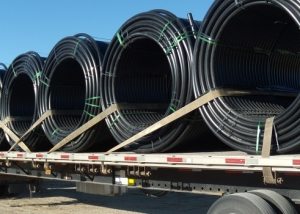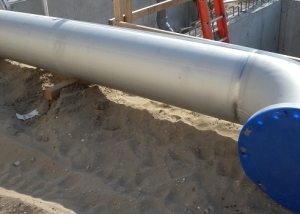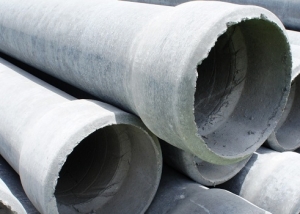Reinforced concrete pipes (reinforced concrete) are products that are made from heavy-duty concrete grades and are used to transport household waste, as well as rainwater. All products made of this material are divided into: non-pressure and pressure. Such parts are very profitable, as they are notable for their low cost, ease of maintenance and long service life.
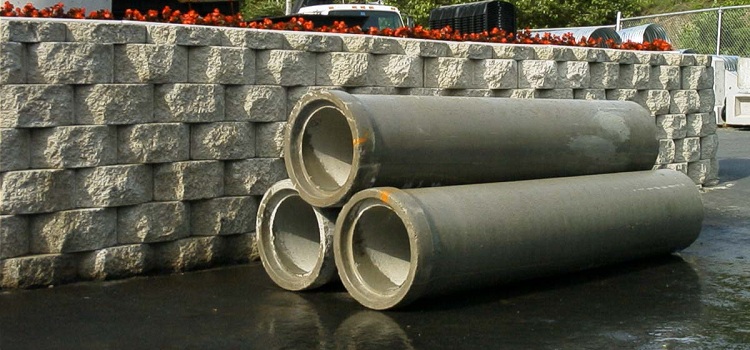
Reinforced concrete pipes are durable, practical products that are used to arrange water supply and drainage systems
Content
Main characteristics of reinforced concrete pipes
The physical and technical characteristics of reinforced concrete pipes are regulated by state standards (GOST). Consider the basic requirements that reinforced concrete parts must meet:
- there should be no cracks on the walls of the reinforced concrete products, otherwise their use is prohibited;
- Products marked with TB, TSP, TBP and TS must be equipped with special rubber seals, which are necessary for the organization of sealing joints.
Helpful information! Marking should be applied in certain places specified in GOST. So, the marking is usually applied to the outer surface of the bell-shaped connecting element. However, for seam pipes, marking is allowed at the end of the part.
The cross-sectional index of such pipes can vary greatly, which allows them to expand their operational area. For the installation of reinforced concrete structures, special equipment is used, since their weight does not allow for DIY laying. However, despite this, such communication is able to quickly pay for itself at the operational stage.
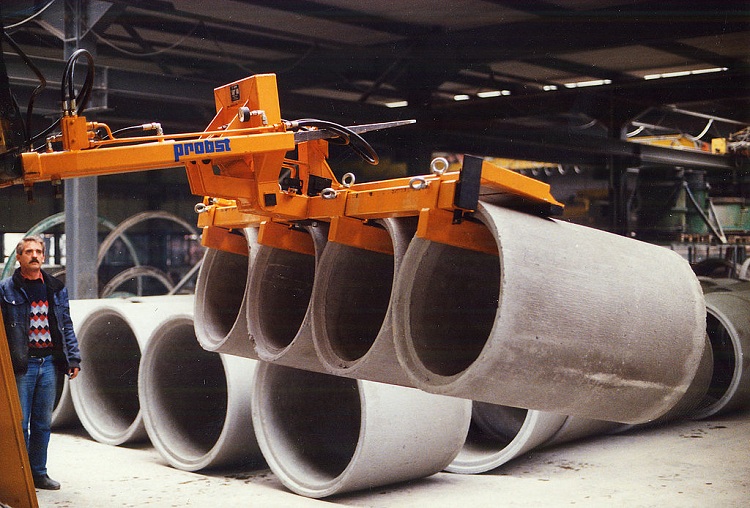
Reinforced concrete pipes are available with different diameters, they are also distinguished by the absence or presence of a bell
Advantages and disadvantages of reinforced concrete pipes
Today, the most common and frequently used pipes are bell-shaped reinforced concrete parts. This is due to the simplicity of joining individual segments of the pipeline with each other. Reinforced concrete products are considered to be an excellent option for organizing pressure-free (gravity) sewage, in which sewage is removed naturally. Reinforced concrete products have many advantages, which are worth paying attention to:
- such pipes are characterized by high strength characteristics, which allows them to withstand heavy loads. Due to its high strength, reinforced concrete parts are actively used for laying under roads and railways;
- resistance to high and low temperatures is another plus of these details. Some products made from special grades of concrete are allowed to be used even in harsh climatic conditions;
- simplicity of joining of individual elements of the pipeline is achieved due to connecting parts (sockets and folds);
- the inner walls of such parts are characterized by a low roughness coefficient, which allows to achieve good throughput performance. In some cases, to reduce the coefficient of resistance, special compositions are applied to the inner surface of the pipes that eliminate microscopic defects;
- Concrete is a material that is resistant to harmful corrosive effects and also resistant to decay. Therefore, under certain conditions, reinforced concrete pipes are considered more reliable than steel counterparts;
- concrete is a dielectric material, therefore, products from reinforced concrete are able to resist the influence of stray currents in the ground;
- such pipes are characterized by minimal metal consumption.
Like any other reinforced concrete product, non-pressure and pressure pipes have some disadvantages:
- a large mass, which requires the use of special equipment for installation of the channel;
- poor resistance to aggressive environments.
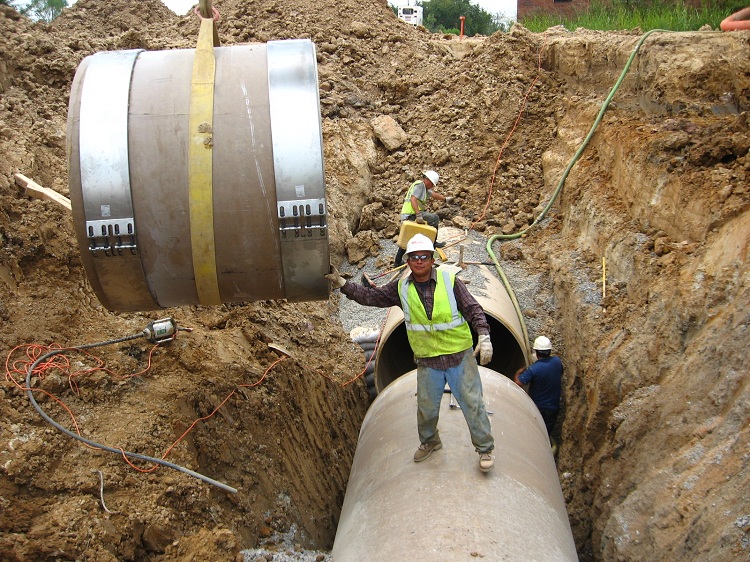
An important advantage of reinforced concrete pipes is their high strength, which allows them to be laid underground and in places where there is a large load on the soil
Reinforced concrete pipes have a long shelf life, which can reach 50 years (with normal use). Such products are divided into several varieties, depending on the design and functional features.
Varieties of reinforced concrete pipes
Today there are 4 main types of reinforced concrete pipes:
- non-pressure;
- pressure head;
- bell-shaped;
- non-pressure bell-shaped.
Non-pressure reinforced concrete pipes are used for laying channels through which liquid is transported due to the slope of the communication.
Note! It is important to note that the index of the cross section of the stream transported through a pressureless pipeline is usually 5% less than the diameter of the pipe structure itself.
Pressure parts are made from durable grades of concrete and are used for the installation of sewer and other systems in which the working medium moves as a result of pressure. The pressure in such communications is pumped using special pumping equipment.
Bell parts are called so because they include special connecting elements - bell sockets. A bell-shaped reinforced concrete pipe is a segment of a pipeline structure that has an extension at one end and a narrowing at the other. Non-pressure concrete pipes are the most common today.
Non-pressure bell-shaped concrete pipes are used to organize gravity channels. Such products are resistant to harmful corrosive effects, and also have a long service life. Docking of individual segments of such a pipeline is carried out due to bell-shaped connecting elements.
All reinforced concrete products are divided into 2 main groups, depending on the connection option:
- bell-shaped concrete pipes;
- rebate concrete pipes.
Reinforced concrete non-pressure bell-shaped pipes have a cylindrical section and a stepped surface in the area of the sleeve element. They are equipped with rubber rings for sealing joints and soles. Parts that are joined due to folds practically do not differ from bell-shaped ones, except for the type of connection.
Reinforced concrete pipe marking
The marking of reinforced concrete products determines their functional purpose and is applied, as mentioned above, on the outer surface of the socket or on one of the ends of the seam parts. Firms producing reinforced concrete products, without fail, apply marking, which consists of:
- letter designation;
- digital designation.
The letter designation indicates the type of pipe and its features. The table below shows the main options for the lettering of reinforced concrete pipe elements.
Table 1
|
Marking |
Product Features |
| T | A cylindrical piece that is shaped like a cone. One end of the product is made in the form of an expanded funnel, and the second is equipped with a sleeve element.The butt joint of such a part is equipped with a rubber sealing ring. |
| TN | Products of this type are used for laying pressure channels, which are equipped with pressure superchargers (pumps). |
| TP | Models like T-pipes are conical in shape. They are joined by means of bell-shaped connecting elements. In the lower working position include the sole. |
| TB | They have the same shape as the previous type, however, a significant difference between these products is the presence of a persistent shoulder. Equipped with rubber sealing elements to increase the sealing of joints. |
| TBP | No different from previous reinforced concrete products, except that they include a sole. |
| TS | Concrete pipes of this type are equipped at the production stage with a stepped surface to facilitate joining. They include a docking surface that is sealed with rubber seals. |
| Tsp | No different from the previous variety of reinforced concrete pipes, except for the presence of a sole in its composition. |
| Tfp | These parts are folded and are equipped with special rubber seals that are used in butt joints. |
| TBFP | The same parts as the DFT products, but include the sole. |
| TO | Technically, these products resemble TBFP parts, but have one difference - an oval-shaped hole. |
| TE | They differ from the previous type of pipe only in that they have an elliptical and not oval hole. |
The geometric characteristics that are applied in the form of a digital designation on a reinforced concrete product are as follows:
- the first digit, as a rule, indicates the indicator of the internal section of the part;
- the second digit corresponds to the indicator of the useful length of the part, calculated in decimeters;
- the last figure tells about the bearing capacity of the reinforced concrete pipe.
Thus, by marking it is possible to determine not only the purpose of a particular reinforced concrete pipe, but also get acquainted with its geometric characteristics, which are necessary for various kinds of calculations.
Features of the installation of reinforced concrete pipes
Consider the step-by-step installation procedure for the reinforced concrete pipeline:
- The coupling of the reinforced concrete part should be positioned so that the end face of the operated side is aligned with the mark on the pipe. The sealing element, represented by a rubber ring, must be located so that the distance from it to the working seal of the coupling is minimal.
- Then, a sealing element is thrown at the end of the second reinforced concrete segment. The distance of this element to the end should be small.
- At the third stage, through the use of special mounting tools, the coupling is moved towards the abutting pipe. At the same time, the first rubber sealing element is rolled.
- Further, the coupling moves until it reaches a special mark on the second pipe.
- At the end, the second o-ring is mounted in the coupling slit.
Thus, the reinforced concrete pipeline is assembled. The presence of o-rings allows you to achieve the necessary sealing performance.
Note! Reinforced concrete pipes, the cross-sectional index of which exceeds 700 mm, are joined so that the distance from the smooth end of the part to its surface is at least 1–1.5 cm.
It is important to remember that after the junction of the two pipes is organized, care must be taken to seal it. For these purposes, it is recommended to use a hemp lock, which is smeared with a composition based on bitumen. After terminating the joint, they often minted, which is necessary to ensure maximum reliability of the obtained compound. Chasing is carried out with a mixture of asbestos (30%) and cement (70%).
